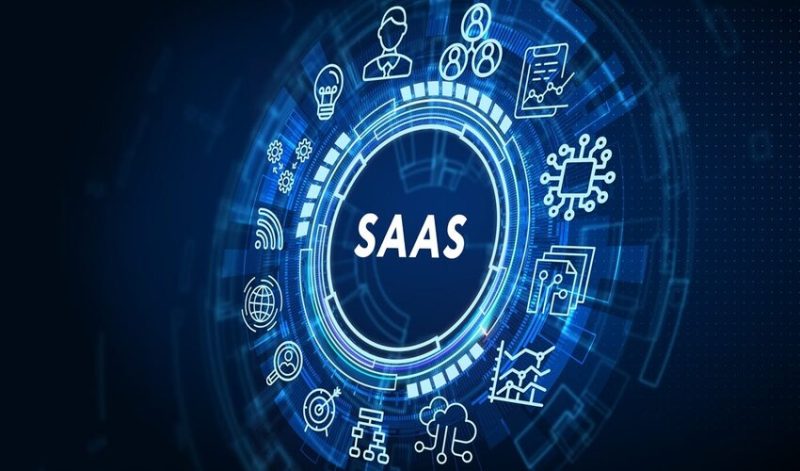The Software as a Service (SaaS) industry has been a game-changer in how businesses operate. As cloud-based platforms continue to dominate the technological landscape, they bring about unparalleled agility, scalability, and cost savings.
As we venture toward the end of 2023 and prepare for what’s next, there are some emerging trends that promise to redefine the future of SaaS.
Let’s dive in and explore these exciting frontiers.
- Hyper-Personalization: Beyond Generic Solutions
As businesses grow more diverse, the one-size-fits-all approach of yesteryears no longer cuts it. SaaS platforms are now focusing on hyper-personalization. This means tailored experiences for users based on their unique needs and behaviors.
Think of it as your favorite playlist on a music app but for enterprise solutions. This shift towards customization promises to enhance user engagement, streamline operations, and optimize business outcomes.
- Sustainable and Green SaaS: Conscious Tech Choices
With the world becoming more environmentally aware, sustainability isn’t just a buzzword; it’s a necessity. The SaaS industry is joining this green revolution. Many providers are now focusing on creating energy-efficient solutions, reducing their carbon footprint, and supporting a more circular economy.
As businesses, choosing such SaaS platforms not only means doing good for the planet but also resonating with a clientele that values sustainability.
- Rise of Vertical SaaS: Industry-Specific Solutions
One of the most significant shifts in the SaaS space is the emergence of vertical SaaS platforms, tailor-made for specific industries. A recent Healthcare SaaS Industry Update reveals that software solutions for healthcare have become particularly pivotal, addressing unique challenges faced by medical professionals and institutions.
From healthcare and real estate to education and agriculture, software solutions are being designed to cater to the specific needs of various sectors. These platforms understand the intricacies of their target sectors, ensuring that businesses receive tools and features fine-tuned to their operational needs.
As industries evolve, this trend ensures that technology keeps pace, delivering solutions that truly resonate.
- AI and Machine Learning Integration: Smart Operations
While AI and machine learning have been on the tech radar for a while, their integration into SaaS is set to become more profound. These technologies offer predictive insights, automation, and enhanced user experiences.
From customer relationship management systems predicting client needs to HR platforms streamlining recruitment through intelligent algorithms, the future of SaaS is undeniably smart.
- Enhanced Security Protocols: Trust in the Cloud
With cyber threats becoming more sophisticated, security remains a top concern for SaaS users. Recognizing this, providers are ramping up their security measures. Expect advanced encryption, multi-factor authentication, and regular security audits to become the norm.
This trend underscores the industry’s commitment to offering secure, reliable, and trustworthy solutions in an interconnected digital landscape.
- Remote Work Facilitation: Bridging Distances
If there’s one thing the previous years have taught us, it’s the importance of adaptability in the face of global challenges. Remote work, once a perk, has transformed into a necessity. The SaaS industry has responded robustly, offering platforms that make collaboration, communication, and project management seamless across distances.
Whether it’s tools that replicate office interactions virtually or platforms that ensure data accessibility irrespective of location, the emphasis is on ensuring teams remain cohesive and productive.
- Enhanced User Education: Nurturing SaaS Literacy
With the influx of diverse tools and platforms, there’s a growing recognition of the need to educate users. The SaaS industry is placing a renewed focus on comprehensive onboarding, interactive tutorials, and continuous learning resources.
This isn’t just about mastering a tool; it’s about fostering an environment where users can leverage the full potential of their SaaS investments. With an educated user base, businesses can ensure smoother integrations, better returns on investments, and a workforce that’s truly in sync with the digital age.
- Micro-SaaS Emergence: Niche Solutions for Specific Needs
In the vast expanse of the SaaS ecosystem, there’s a rising trend towards Micro-SaaS—smaller, niche solutions targeting particular problems or audience groups. These are often created by small teams or even individual developers.
Instead of being all-encompassing platforms, they address particular pain points, ensuring high efficiency. For businesses, this means having access to tools that are laser-focused on specific tasks, leading to increased productivity and streamlined operations.
- Integration and Interoperability: The SaaS Symphony
As businesses adopt multiple SaaS solutions, there’s an increasing need for these platforms to ‘talk’ to each other. Seamless integration and interoperability are becoming more crucial than ever. This trend underscores the industry’s move towards creating ecosystems where data flows smoothly between different platforms, tools, and systems.
Such integrations eliminate data silos, promote real-time information exchange, and enhance overall operational efficiency, making businesses more agile and responsive.
- Pricing Model Evolution: Flexibility in Subscriptions
The traditional subscription models are witnessing a makeover. With competition intensifying, SaaS providers are exploring innovative pricing strategies to appeal to a broader audience. Pay-as-you-go, usage-based pricing, and tiered models that scale with business growth are becoming increasingly popular.
This shift ensures that businesses, irrespective of their size or budget, can access cutting-edge solutions without being burdened by rigid pricing structures, making the SaaS world more inclusive and adaptable.
- User Experience (UX) Revolution: Designing with Empathy
In a crowded SaaS marketplace, having a stellar user experience is becoming a decisive differentiator. Platforms focus on intuitive design, responsive interfaces, and empathetic user journeys. This trend emphasizes understanding the user’s mindset, needs, and challenges, ensuring that navigating the software is not just efficient but also delightful.
The goal is to reduce the learning curve, minimize potential frustrations, and enhance overall user satisfaction, leading to increased loyalty and advocacy in the long run.
- Global Expansion and Localization: Bridging Cultural Gaps
As SaaS platforms eye global audiences, there’s an increasing emphasis on localization—not just in terms of language, but also in catering to cultural nuances and regional regulatory requirements. This trend is about more than just translation; it’s about understanding and respecting local customs, business etiquette, and user expectations.
By offering localized content, interfaces, and support, SaaS providers ensure that their solutions resonate with a global audience, making technology universally accessible and relatable.
Conclusion
The coming years promise to be exciting for the SaaS industry. With a focus on personalization, sustainability, intelligence, and security, the future beckons with solutions that aren’t just technologically advanced but are also aligned with human and planetary needs.
As businesses or individual users, staying attuned to these trends means being future-ready and harnessing the best that technology has to offer. The SaaS horizon is vast and ever-evolving, and the journey ahead is filled with endless possibilities.

Aimee Garcia is a senior editor at ReadDive. She has 5+ years of experience in Digital Marketing. She has worked with different IT companies.





